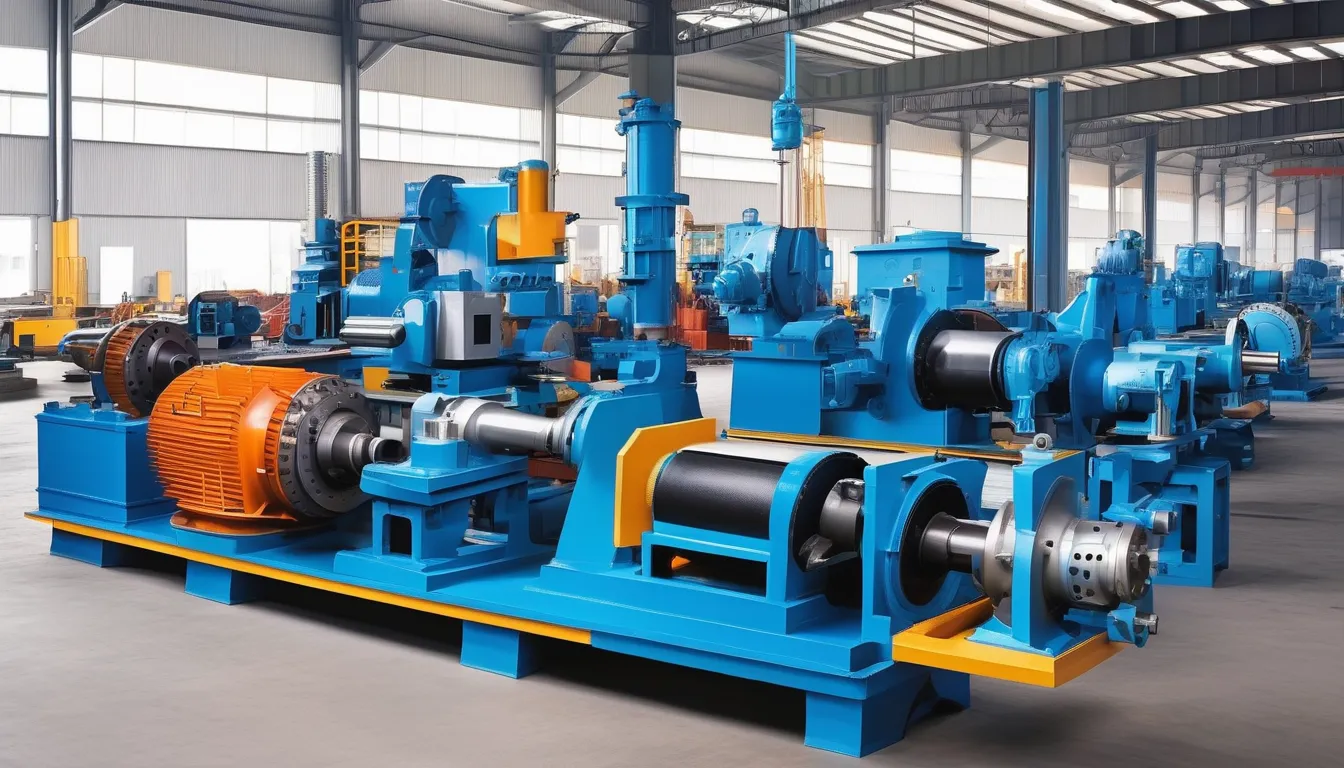Understanding the Components of an Industrial Gear Drive

When you think about industrial gear drives, it’s crucial to recognize the various components that work together for optimal performance. You’ve got gears that influence speed and torque, along with bearings that reduce friction and support rotation. The housing safeguards these parts, while effective lubrication keeps everything running smoothly. But what happens when one of these elements falters? Understanding each component not only enhances efficiency but also ensures reliability in your operations. So, what are the specific roles of these components, and how can you optimize their function? Industrial Gear Drive.
Types of Gears
When it comes to industrial gear drive components, understanding the different types of gears is essential for optimizing performance. Gears are the heart of any drive system, and knowing how each type functions can significantly impact efficiency.
First, you should familiarize yourself with spur gears, which are the most common. They’re characterized by their straight teeth and are ideal for transmitting power between parallel shafts.
If you need quieter operation, consider helical gears. Their angled teeth allow for smoother engagement, reducing noise and wear.
Next, understand bevel gears, which enable power transmission between intersecting shafts. They’re great for changing the axis of rotation.
For high torque applications, worm gears are worth your attention. They provide a significant gear reduction and can handle heavy loads but come with lower efficiency.
Lastly, don’t overlook planetary gears. They offer compact designs and are highly efficient, making them perfect for applications where space is limited.
Bearing Systems
In industrial machinery, bearing systems play a crucial role in ensuring smooth operation and longevity. They support rotating components, reducing friction and wear while maintaining proper alignment. When you select a bearing system, consider factors like load capacity, speed, and environmental conditions. Each application has unique requirements, and choosing the right type is essential for optimal performance.
There are several types of bearings, including ball bearings, roller bearings, and sleeve bearings. Ball bearings are versatile and can handle both radial and axial loads, making them ideal for many applications. Roller bearings, on the other hand, excel in heavy-load scenarios due to their increased contact area. Sleeve bearings are often used in applications with lower speeds, providing a simpler design that can be effective in less demanding environments.
Proper lubrication is another critical aspect of bearing systems. It minimizes friction, prevents overheating, and extends the life of the bearings. Regular maintenance, including checking for wear and ensuring adequate lubrication, helps you avoid costly downtime and repairs.
Gear Drive Housings
Bearing systems support the smooth functioning of industrial gear drives, but the housing that encloses these components is equally important. Gear drive housings protect the internal mechanisms from external contaminants like dust and moisture, which can cause wear and tear.
They also provide structural integrity, ensuring that all components remain aligned and secure under various operating conditions.
When selecting a gear drive housing, you’ll want to consider the material. Common choices include cast iron and aluminum, each offering unique benefits in terms of strength, weight, and thermal conductivity.
The design of the housing should also allow for efficient heat dissipation, as excessive heat can lead to premature failure.
You should pay attention to the mounting options provided by the housing as well. Proper mounting ensures that the gear drive operates smoothly and reduces vibration, enhancing the longevity of the drive.
Additionally, housing features such as inspection ports can help you monitor the system’s condition without disassembling the entire unit, saving time and effort.
Ultimately, a well-designed gear drive housing plays a critical role in maintaining the reliability and performance of your industrial gear drive system.
Lubrication Methods
Effective lubrication is essential for maximizing the performance and lifespan of industrial gear drives. You’ve got several methods to consider, each with its own advantages. The most common methods include splash lubrication, oil mist lubrication, and forced-feed lubrication.
Splash lubrication involves using the movement of gears to splash oil around the gear case, ensuring that all parts are adequately coated. It’s simple and cost-effective, making it a popular choice for many applications.
On the other hand, oil mist lubrication provides a fine mist of oil, which can penetrate even hard-to-reach areas. This method maintains a consistent lubrication thickness and minimizes oil waste.
For heavier applications where more precision is needed, forced-feed lubrication is your best bet. Here, a pump circulates oil throughout the system, ensuring that every gear tooth receives the right amount of lubrication. This method is especially effective in high-speed or high-load conditions.
Maintenance Practices
While gear drives are built to withstand heavy use, regular maintenance practices are crucial to ensure they operate efficiently over time.
You should start by establishing a routine inspection schedule to catch any potential issues early. Look for signs of wear, such as unusual noise or vibration, which can indicate misalignment or imbalance.
It’s also vital to monitor the lubricant levels and quality. Change the oil according to the manufacturer’s recommendations, and consider using a lubricant that matches your operating conditions.
Keeping the gear drive clean is equally important; dust and debris can accelerate wear and lead to component failure.
Don’t forget to check the seals and gaskets regularly. A small leak can lead to significant problems down the line.
If you notice any issues, address them immediately to prevent further damage.
Conclusion
In conclusion, mastering the components of an industrial gear drive is key to optimizing performance and reliability. By understanding the various types of gears, bearing systems, and gear drive housings, you can make informed decisions. Don’t forget the importance of proper lubrication methods and regular maintenance practices to keep your gear drive running smoothly. With this knowledge, you’re well-equipped to enhance efficiency and extend the lifespan of your equipment.

